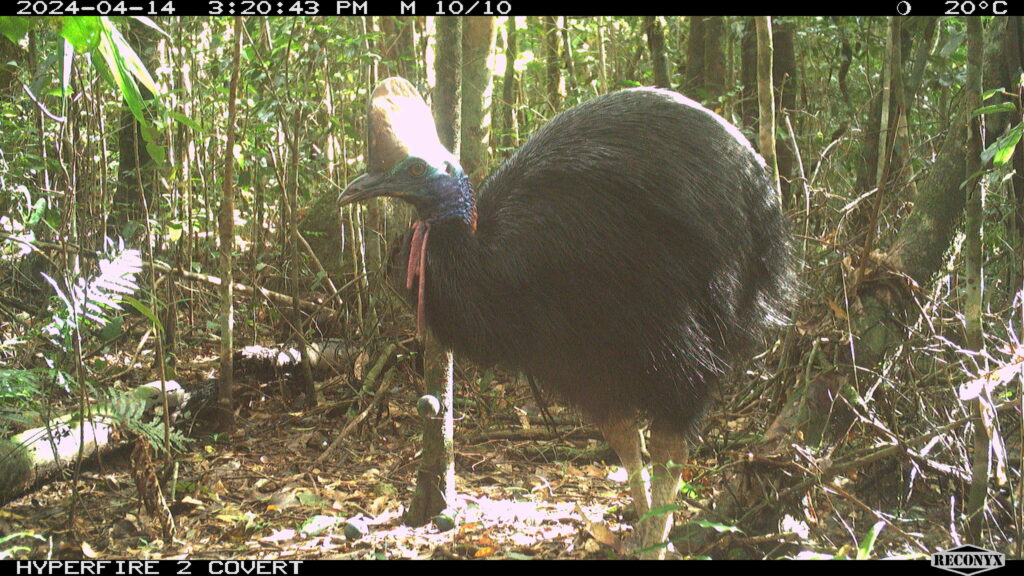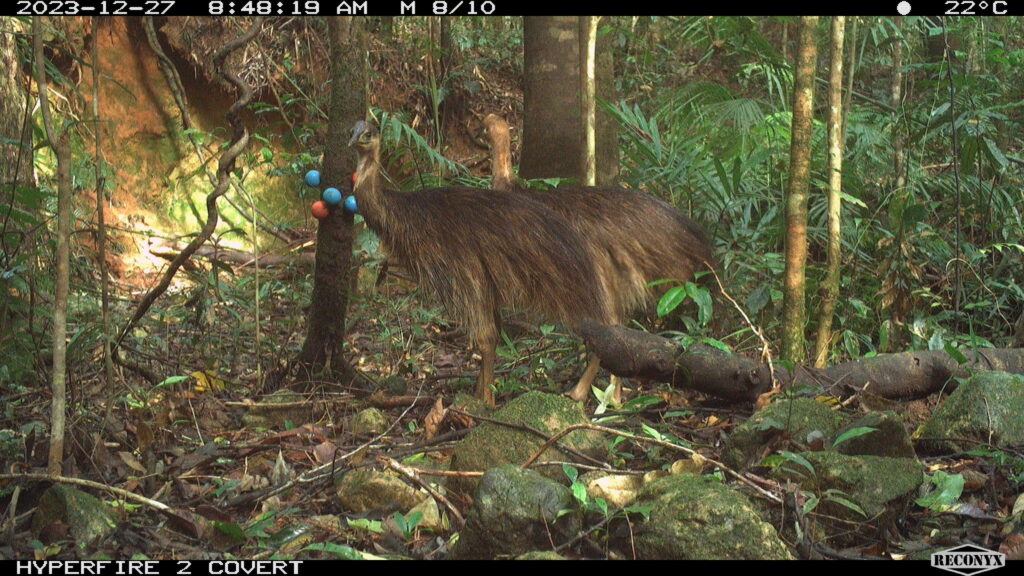… AND there’s visual proof collected from camera traps set up in a range of places in the forests in the Paluma Range area. Please read Wren Mclean’s (project leader and researcher) update on data recently analysed.
A multi-year study of the cassowary across Paluma Range is underway and has returned some exciting early results with images of at least 7 individual birds so far. On the tail end of the Wet Tropics, the Paluma Range holds the most southern population of these iconic, cryptic, assertive and very cool birds. These ancient ratites are the original rainforest gardeners, having evolved to their current form 50 million years ago! They have spent that valuable time in symbiosis with the rainforest, consuming the fruits and dispersing the seeds of rainforest plants. They depend on the rainforest and the rainforest depends on them.

Having lost a majority of their rich fruiting lowland rainforest habitat to human endeavours, sadly, our much-loved Southern Cassowary is an endangered species. Some inhabit poorer fruiting high altitude forests and those that remain on the lowlands are susceptible to road strike, dog attack, pig competition and the challenges of habitat fragmentation.
We can rejoice that cassowaries are breeding in the Paluma Range with a pair of stripy chicks accompanying their Papa in November and two young sub-adults travelling together in December 2023.
We know cassowaries here are in low density but was this always the case? More information will help us put the pieces of the jigsaw together to understand their seasonal habitat use, whether there are threats we don’t understand and actions we can take to secure cassowaries for the long-term.
There’s cassowaries in dem dere hills, but are they using the lowlands and coastal vine thickets? A citizen science program is calling out for any historical or current sightings or signs of cassowaries from on, or below the Paluma Range.

Please record your sightings on this URL https://arcg.is/1vjLaq or by scanning this QR code.


I and some other track maintenance volunteers have been privileged to see a chick with supervising father on two occasions on the Bambaroo track and the jourama track in the last three years. It’s great to see that these endangered and rare birds breeding and flourishing in our region. Wilfred